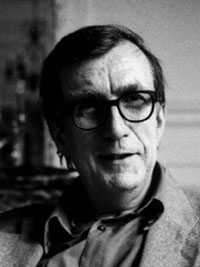Bruno Latour
From Geography

The actor network theory (ANT) is focused on networks of relations and interactions between actors in a technological setting. In short, ANT studies networks in which actors (human and non-human) influence each other. The aim of ANT is explaining difficult networks within a scientific setting. In this case, people try to bring difficult research and studies back to a lab situation. When everybody needs to improve and understand situations, you have to simplify everything. In this, Latour made a distinction between causal thinking and thinking in networks. In terms of causal thinking you can assume that every occasion or actor has influence on the other etc. In terms of network thinking you can assume that a number of actors and theories cause a occasion or shift. That is also why Latour speaks in terms of actants instead of actors, because not every actor has a active rol (a wall can also be an actor). There isn’t a hierarchy in it. Every actor in a network has an equal influence on a change or occasion, but he gaves human actors a bigger role than non-human actors. He calls actors like technology and humans entities. These actors doesn't have a meaning by theirselves, they get their meaning by relations with other actors.(Law & Hassard, 1999).
Therefore it could make sense to use the ideas of Latour to explain spatial change. Dropping the subject-object antagonism is one of the fundamental parts of his theory. When we study spatial change, it is neither social nor technical aspects where we have to look at. “Fact and opinion do not exist as autonomous phenomena.” (Latour, 1993). It are propositions, associations of humans and non-humans, who are going through a process before they become instituted as actors in the collective.
References
-Latour, B. (1987). Science In Action: How to Follow Scientists and Engineers Through Society, Harvard University Press: Cambridge Mass.
-Latour, B. (1993). “We have never been modern”. Prentice Hall: Harvester Wheatsheaf
-Law, J. & Hassard J. (1999) “Actor-Networktheory and after” Blackwell publishers: London
Contributors
-Published by Bas Boselie (s0813141) & Chriss van Pul (s0801364)
-Image inserted and page enhanced by --JikkeVanTHof 14:59, 18 October 2011 (CEST)